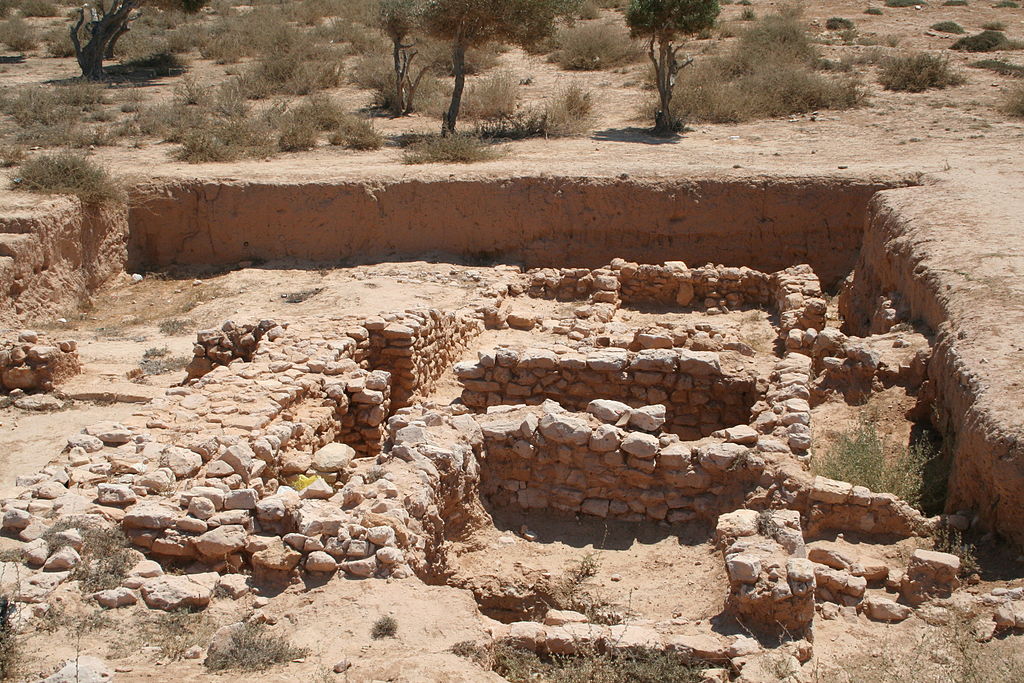
Archaeologists in Israel have made a new discovery in the Negev desert. They have uncovered a burial site that dates back 2,500 years. This site is located in southern Israel and holds dozens of skeletons, possibly belonging to women who were trafficked.
The tombs found at this location, containing at least 50 skeletons, were situated at a significant junction where traders from various cultures used to meet and exchange goods and resources.
The details of this discovery were published on June 9 in the Tel Aviv: Journal of the Institute of Archaeology of Tel Aviv University.
In 2021, a team of archaeologists came across these burials while conducting a survey for a water pipeline construction project in the area. Typically, burial sites in the Negev region are rounded mounds called tumuli. However, the two chambers that were recently discovered stand out because of their square shape.
One of the chambers measures 23 by 23 feet (7 by 7 meters), while the other is slightly smaller, measuring 15 by 15 feet (4.5 by 4.5 meters). The location of these tombs is also significant, according to the researchers.
Tombs located at ancient crossroads
Situated at a significant crossroads, these tombs are positioned at the meeting point of two crucial ancient paths.
These paths stretch from the western region to the eastern direction, connecting Egypt to the Wadi Arabah, a region in the southern part of the Negev located south of the Dead Sea basin. Additionally, these tracks also connect to southern Jordan and the Arabian Peninsula.
The two elaborate tombs containing at least 50 skeletons, possibly the remains of trafficked women, lie at an ancient crossroads in Negev desert where caravans of traders from different cultures once traversed to swap goods and other resourceshttps://t.co/iktAqiMYfx pic.twitter.com/WkA0sVS4Q5
— Sarah (@Sarah404BC) July 7, 2023
Tali Erickson-Gini, an archaeologist at the Israel Antiquities Authority and co-author of the study, said that the presence of death and burial along ancient roads in the harsh desert was a common occurrence, resulting from factors such as violence or illness.
The authors of the study suggest that these individuals may have been laid to rest in this particular location due to the perception of crossroads as sacred spaces with significant ritual and religious significance during ancient times.
Artifacts from different cultures inside the tomb
Within the tomb, a trove of artifacts was discovered, originating from various cultures spanning the southern Levant (the area surrounding the eastern Mediterranean), southern Arabia, and Egypt.
These artifacts can be traced back to the late Iron Age and the early Persian Achaemenid period, which occurred between the seventh and fifth centuries B.C.
The researchers have indicated that certain objects found at the site suggest that the human remains discovered there belonged to adult women. However, additional analysis is required to confirm this observation.
For instance, the tombs contained jewelry made of copper alloy and iron, as well as ceramic vases and shells from the Red Sea, known as Cypraea shells.
These shells were sometimes used by Egyptian women as talismans to protect against evil influences and attract good fortune.
Additionally, the archaeologists unearthed incense holders and an alabaster tray, remnants of the once-thriving trade in myrrh and frankincense across this region.
However, some of the incense containers were deliberately shattered, likely as part of a burial ritual, as noted by the researchers.
See all the latest news from Greece and the world at Greekreporter.com. Contact our newsroom to report an update or send your story, photos and videos. Follow GR on Google News and subscribe here to our daily email!



